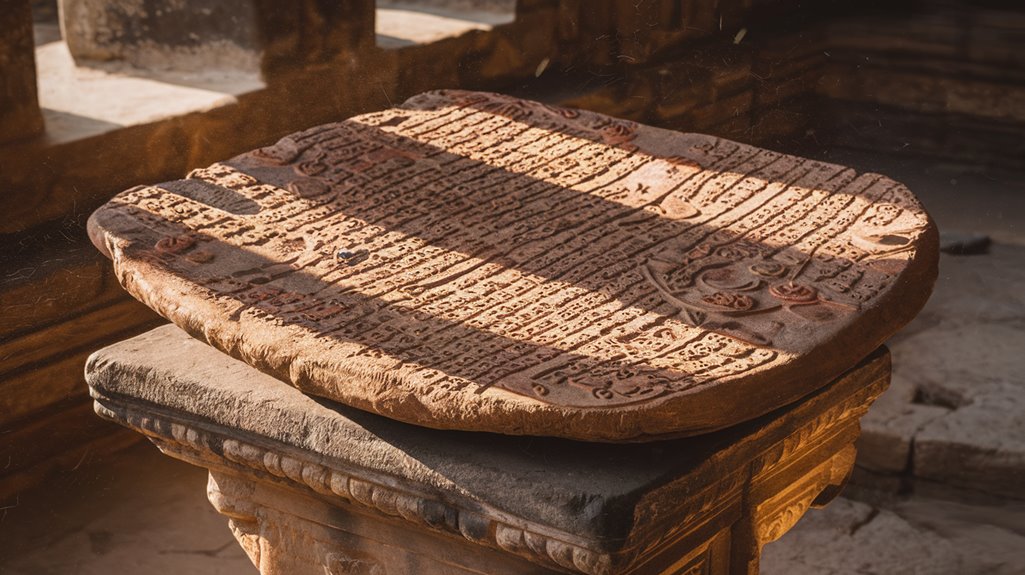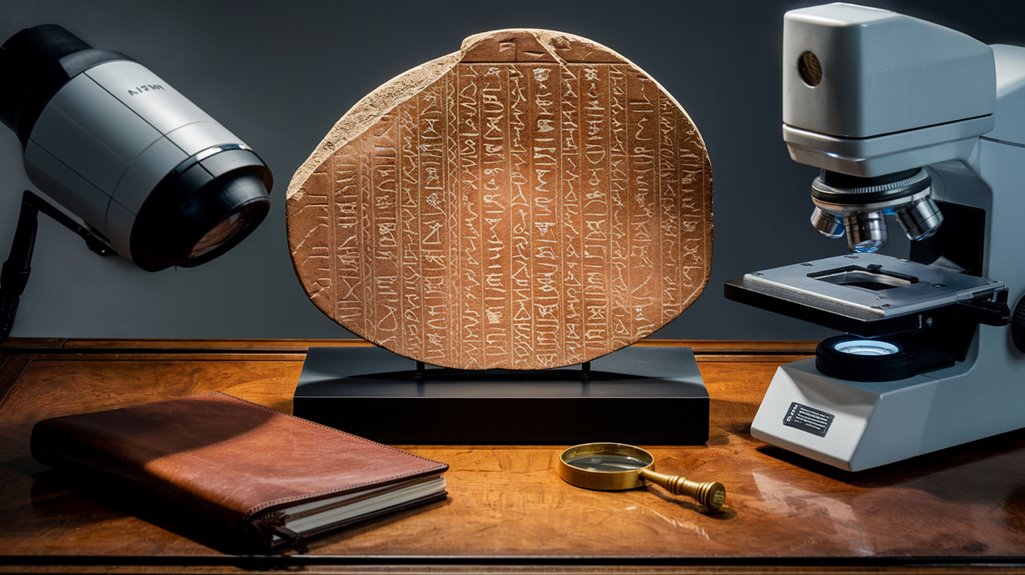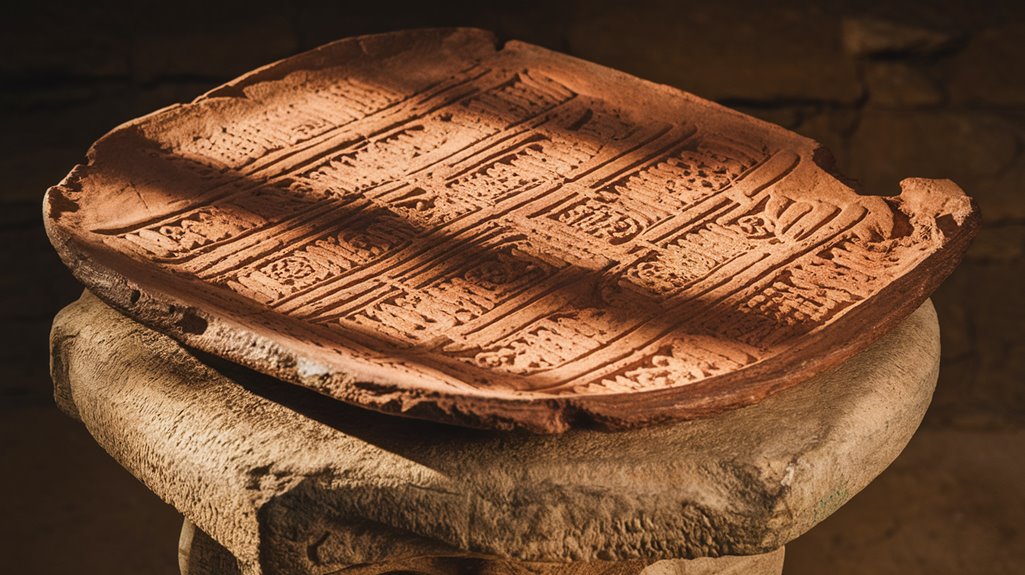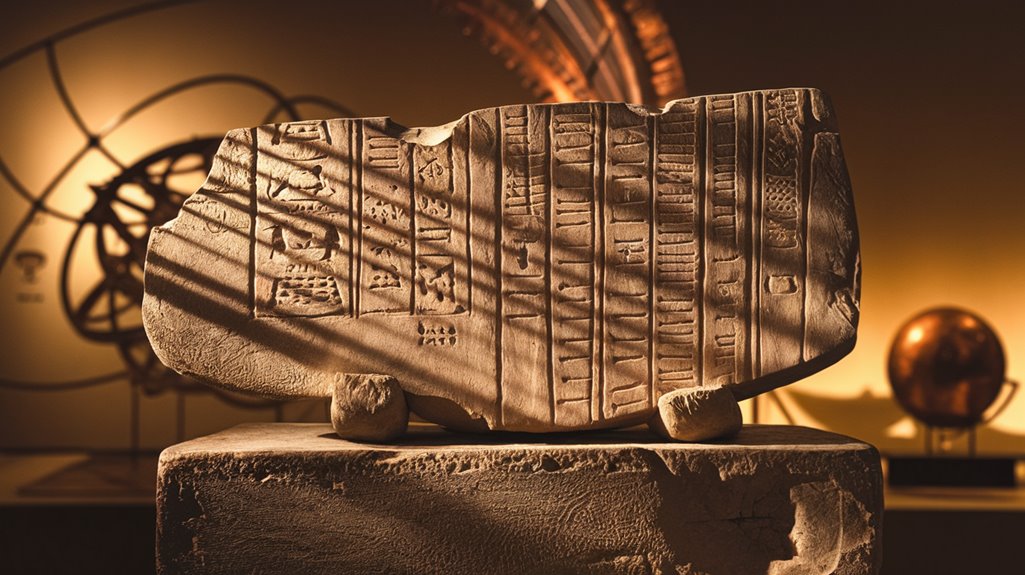Some Ancient Languages Remain Undeciphered
Like ancient sirens calling from forgotten shores, undeciphered languages beckon you toward their mysteries. You've probably heard of the Rosetta Stone's success, but dozens of scripts still guard their secrets behind cryptic symbols and patterns. When you consider that each unbroken code could reveal lost histories, forgotten beliefs, or revolutionary ideas, you'll understand why linguists and historians won't give up. There's something powerful about knowing that ancient voices are still waiting to be heard.
Understanding the Mystery of Lost Languages

Why do some ancient languages remain an enigma despite our modern technological advances?
You'll find that decoding these forgotten voices of ancient societies presents unique challenges that even cutting-edge technology can't easily solve. The biggest obstacle is often the scarcity of available texts and materials, making it difficult to gather enough data for analysis. Understanding these languages is particularly challenging since most historical languages are no longer spoken today. Ancient texts with longer inscriptions tend to be more easily decipherable as they provide more data to analyze.
When you're studying linguistic evolution, you need more than just computerized methods. Success requires combining logic with intuition, drawing from diverse fields like archaeology and historical linguistics.
You'll discover that traditional text analysis becomes particularly challenging when ancient writings lack familiar elements like spacing and punctuation. Without a well-researched related language for comparison or substantial text samples, even advanced machine learning systems struggle to reveal these ancient mysteries.
Famous Undeciphered Scripts Through History
Throughout history, five major categories of undeciphered scripts have captivated archaeologists and linguists alike. From the mysterious Indus Valley script with its 4,000 inscriptions to the enigmatic Voynich Manuscript, these ancient scripts continue to challenge our understanding of language evolution.
You'll find these scripts scattered across different civilizations and time periods. The Mayan hieroglyphs, though partially decoded, still hold secrets about their society. The Phaistos Disc from Crete and Romania's Tartaria Tablets represent some of humanity's earliest attempts at written communication. Many claims of decipherment fail due to lack of scholarly support.
The Rapa Nui script from Easter Island adds to this fascinating collection of undeciphered texts. These ancient texts were often carved into wooden tablets, though most have degraded over time.
What makes these scripts so challenging to decode? It's often the lack of bilingual texts, insufficient material, or complex sign systems that prevent scholars from revealing their secrets.
Key Challenges in Decoding Ancient Writing Systems
Decoding ancient writing systems presents scholars with a complex web of interconnected challenges. When you're trying to understand an ancient script, you'll often face multiple obstacles that make decipherment techniques difficult to apply. Archaeological evidence shows that only 3,500 Indus seals exist for study. Most Indus texts contain 4 to 5 signs on average.
Without bilingual texts like the Rosetta Stone, you can't make direct comparisons to known languages, and if there aren't enough surviving examples, script analysis becomes nearly impossible.
You'll find that successful decoding requires overcoming several key hurdles: identifying individual signs within the text, determining whether you're dealing with an alphabet or syllabary, and establishing patterns in how the signs are used.
The task becomes even more intimidating when you're working with an unknown language that has no modern descendants, as you can't rely on linguistic connections to guide your interpretation.
Notable Success Stories in Language Decipherment
While ancient scripts often remain mysterious, several remarkable breakthroughs have revolutionized our understanding of lost languages.
You'll find the Rosetta Stone stands as the most famous success, where scholars used its trilingual inscription to crack Egyptian hieroglyphs through phonetic signs within royal cartouches. Jean-François Champollion made groundbreaking progress by identifying the phonetic and ideographic elements.
The decipherment of Linear B proved equally impressive, as researchers identified place names on Cretan tablets to reveal an early form of Greek writing. Modern techniques now employ basic data processing to help decode ancient scripts.
Cuneiform decipherment marked another triumph, with the Behistun Inscription and Caylus vase providing essential multilingual connections.
These successes share common elements: they relied on bilingual texts, pattern analysis, and historical context to bridge thousands of years of silence.
Through careful comparative study, these ancient voices have found their way back into modern understanding.
Modern Methods and Technologies in Script Analysis

Modern technology has revolutionized the field of ancient script analysis, building upon traditional decipherment methods. You'll find neural decipherment techniques being used successfully on scripts like Ugaritic and Linear B, demonstrating how machine learning applications can accelerate the translation process. Michael Ventris achieved a breakthrough when he deciphered Linear B in 1953.
However, you shouldn't expect computers to work alone. While machine learning models can process vast databases and apply linguistic constraints, they're limited by the scarcity of ancient texts and the complexity of historical languages. The successful decipherment of lost languages often requires decades of research to complete.
You'll need human expertise to navigate challenges like sign classification, writing direction, and cultural context. The most effective approach combines computational power with researcher knowledge – statisticians and linguists working together to reveal these ancient mysteries.
It's this collaboration that's shaping the future of script analysis.
The Cultural Impact of Unsolved Language Puzzles
Throughout history, undeciphered languages have left profound gaps in our understanding of ancient civilizations. You'll find these mysteries in scripts like Linear A, where insufficient fragments limit our knowledge of Minoan culture, and the Vinča symbols, which could represent Europe's oldest writing system.
These unsolved puzzles highlight the incredible language diversity that once existed and continue to impact how you perceive ancient societies. The pre-Roman survival of Basque demonstrates the remarkable persistence of some ancient languages while others vanished. The Indus script civilization left behind thousands of seals and tablets that remain unreadable despite extensive research.
When you consider the cultural heritage at stake, you'll understand why these undeciphered texts are so significant. From the isolated Basque language to the endangered Ainu, each unresolved script represents potential insights into human migration, cultural exchange, and historical development.
Without decoding these languages, you're missing critical pieces of humanity's story, making their study essential for understanding our collective past.










